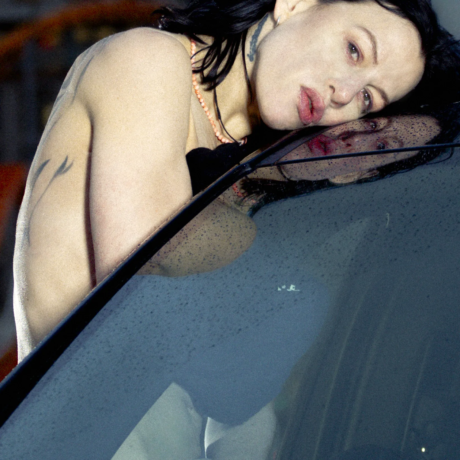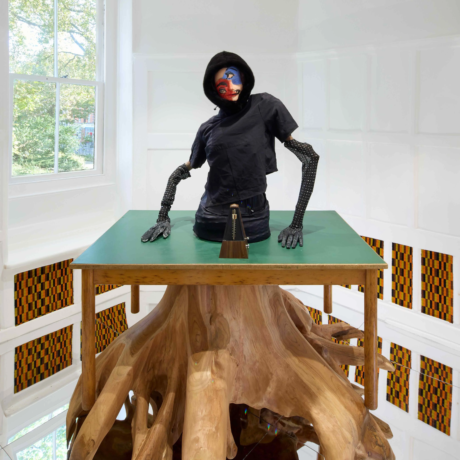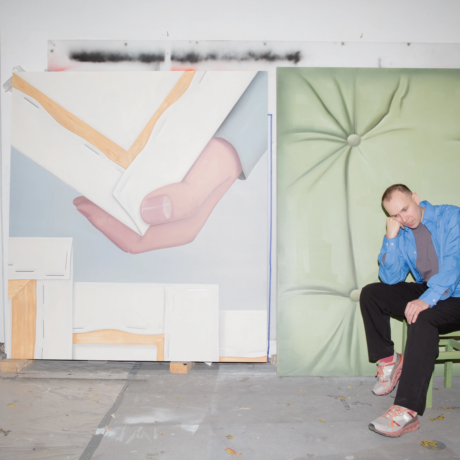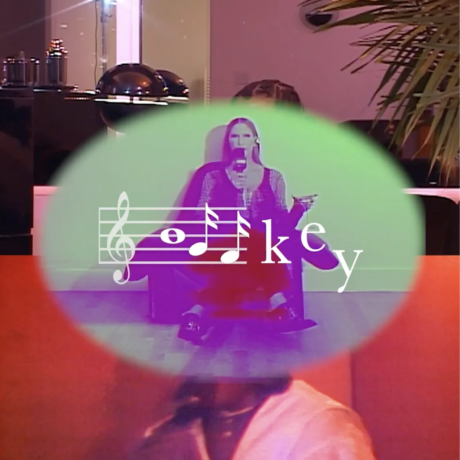Broadly encompassing painting, sculpture, assemblage and collage, Cudelice Brazelton IV explores identity, abstraction and the physicality of place in his work, challenging traditional boundaries between materials, space, and viewer interaction. His solo exhibition, Mortal Surface at Kunsthalle Lingen centers on Brazelton’s experiences as a former steelworker in the American Midwest and he integrates fragments of the Kunsthalle’s industrial past—once a railroad repair facility—into his work. His practice, which has evolved through diverse cultural and geographical influences, explores both his personal history and broader artistic dialogues.
In this interview, Brazelton discusses the nuances of his creative process, his relationship with materials, the conceptual underpinnings of his work and the delicate balance he strikes between the fragility and strength of his assemblages. Through this conversation, we gain insight into how Brazelton navigates the intersections of industrial rawness and artistic sensitivity, shaping a visual language that is as much about materiality as it is about the spaces and histories that inform it.
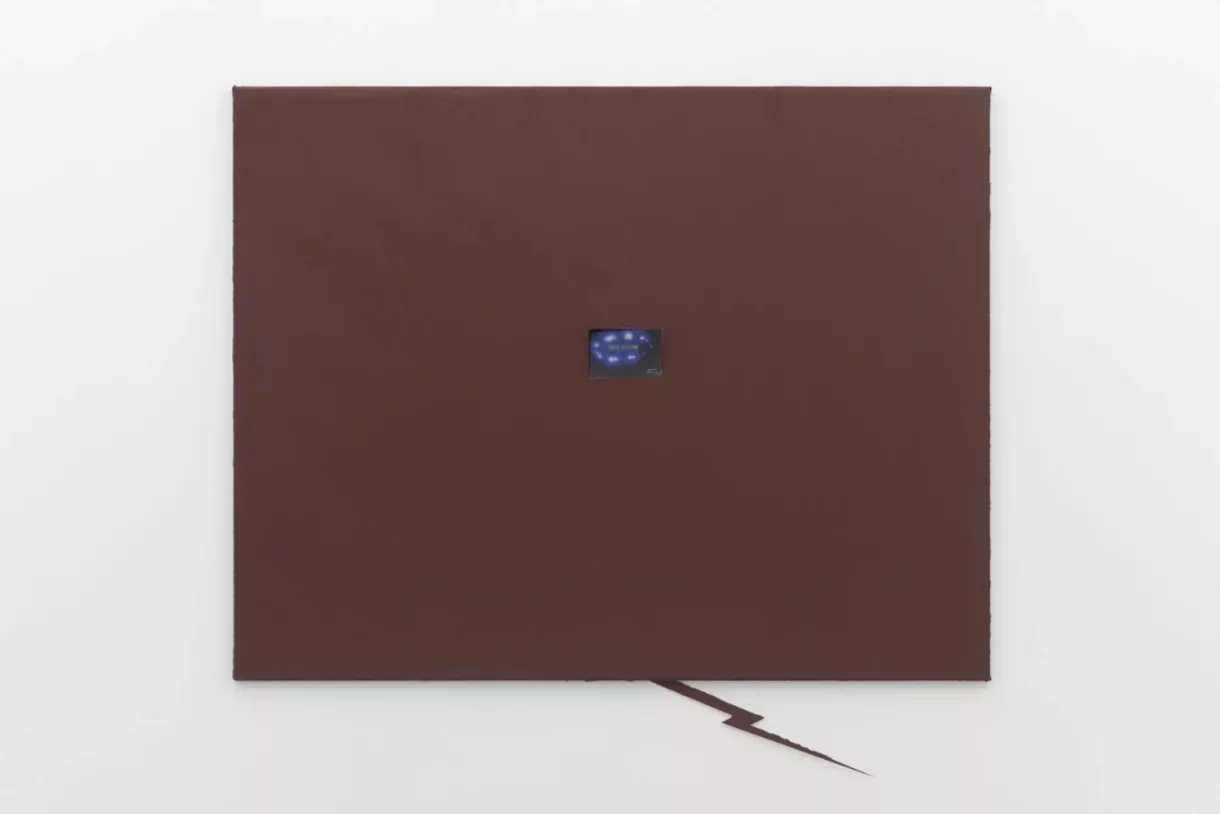
CB: In a way, for me, the show at Kunsthalle Lingen, the title Mortal Surface, and the overall experience have been transformative. How I typically work with collage—it’s almost like a painterly approach, an assemblage approach. My work is rooted in and inspired by the tradition of Black American painting and collage work. But moving abroad to Europe has really expanded that conversation, pushing it beyond just the context of Black American political collage. It’s evolved into bigger installations, with more diverse art historical references merging together. Being based in Germany adds another layer, but it’s when you take that tradition and bring it here to transform it that things get really interesting.
SH: I was really curious about your use of collage and assemblage, which seem central to your process of bringing together disparate elements. I’m interested in how you navigate the tension between working in different contexts, and the materials you use to create a work.
CB: I think my way of making art started as a pragmatic decision, both materially and cost-wise. When you consider accessibility—like printing something out or using house paint—you can glue and attach things in a way that’s both economically practical and creatively satisfying. It’s like zine culture, where you make do with what you have. But as I was exposed to more ideas, I realised that working with accessible materials could be a choice, a way to see how far you could push those materials.
I was never really keen on working with big budgets and expensive materials. I’m more drawn to things that feel everyday and ordinary. I find it more interesting to make something super ordinary feel super strange than to create a spectacle. So, working with assemblage materials allows for flexibility and mobility. For instance, shipping fabric and loose thread is much easier than a heavy sculpture, and you can respond on site. This approach really stood out during the pandemic when people were thinking differently about how to work without access to specialized tools or spaces. It’s about adaptability and working in a more ephemeral way.

SH: Definitely. Sometimes limitations can foster creativity and new ways of working…
CB: Totally. With the recent projects at Kunsthalle Lingen, the challenge was figuring out how to use such a large space while maintaining that minimal, simple material language, but still making it feel convincing and charged. The question became, how do I take delicate moments in the works—like paintings with parts screwed on or blending abstraction with caricature—and amplify those details in a large institutional space? There’s a roughness in these works, but the logic in how things are attached is there. It might look flimsy, but that flimsiness can be intentional, or it can appear that way while being stronger than it seems. I like that mix and play. In a larger space, those details get amplified as you experience them from afar and then up close. That anticipation and strategy work well in a large space.
SH: Previously, you have spoken about how you make works tangible not just visually, but also haptically. How important is the tactile experience for your audience?
CB: I think a lot about that—the way the works sort of rhyme with one another in a room, where there are physical moments, like when a canvas is cut, or a phrase is written on something and then cut out. You see the phrase and the fibres of the canvas coming out, which has its own texture and connotations, like how ripped jeans or a scratched surface have cultural references. I love playing with that, where the labour is visible, but I also want to get into the middle of those meanings.
People often talk about codes in my work, and some understand them while others are confused. For me, these codes are about how different cuts and techniques translate into a more physical and pointed message. It’s not just about the material itself, but the social or personal reasons behind it. It’s not just an aesthetic cut; it’s about body practicality and how things operate on multiple levels.

SH: I’d love to hear more about the title of the show, Mortal Surface. Could you expand on that?
CB: Mortal Surface ties into this idea of embracing the mortality of material—the wear and tear that can be beautiful. There’s a confusion between something being “battle scarred” and what’s considered aesthetically perfect. Perfection can be overlooked in favor of individualism found in imperfection. For me, I’d rather embrace the beauty in imperfection because the communities that inspire my work value that.
In Mortal Surface, there’s an acknowledgment of that expression, where the works themselves might seem delicate but they also demand a certain awareness of their presence. For example, there’s a painting with a figure that has a pointed piece coming out of it, almost like a wooden point. This makes you aware of your physical presence with the work. It’s not violent, but it creates a situation where there’s mutual awareness between the artwork and the viewer. This nullifies any hierarchy and allows for a more empathetic interaction.
The Picker (2020) is an example of how I use cut-out textiles in a pseudo-surreal assemblage. You can make out a face, some kind of operating device, a belt attached—pieces being assembled. This multiplicity of material is consistent in my work, creating a world in my head that follows me wherever I go. The more specific the material, the more intricate the network of artwork becomes. It’s almost like a logic that I carry with me, and it influences how I see the world and translate that into collage.
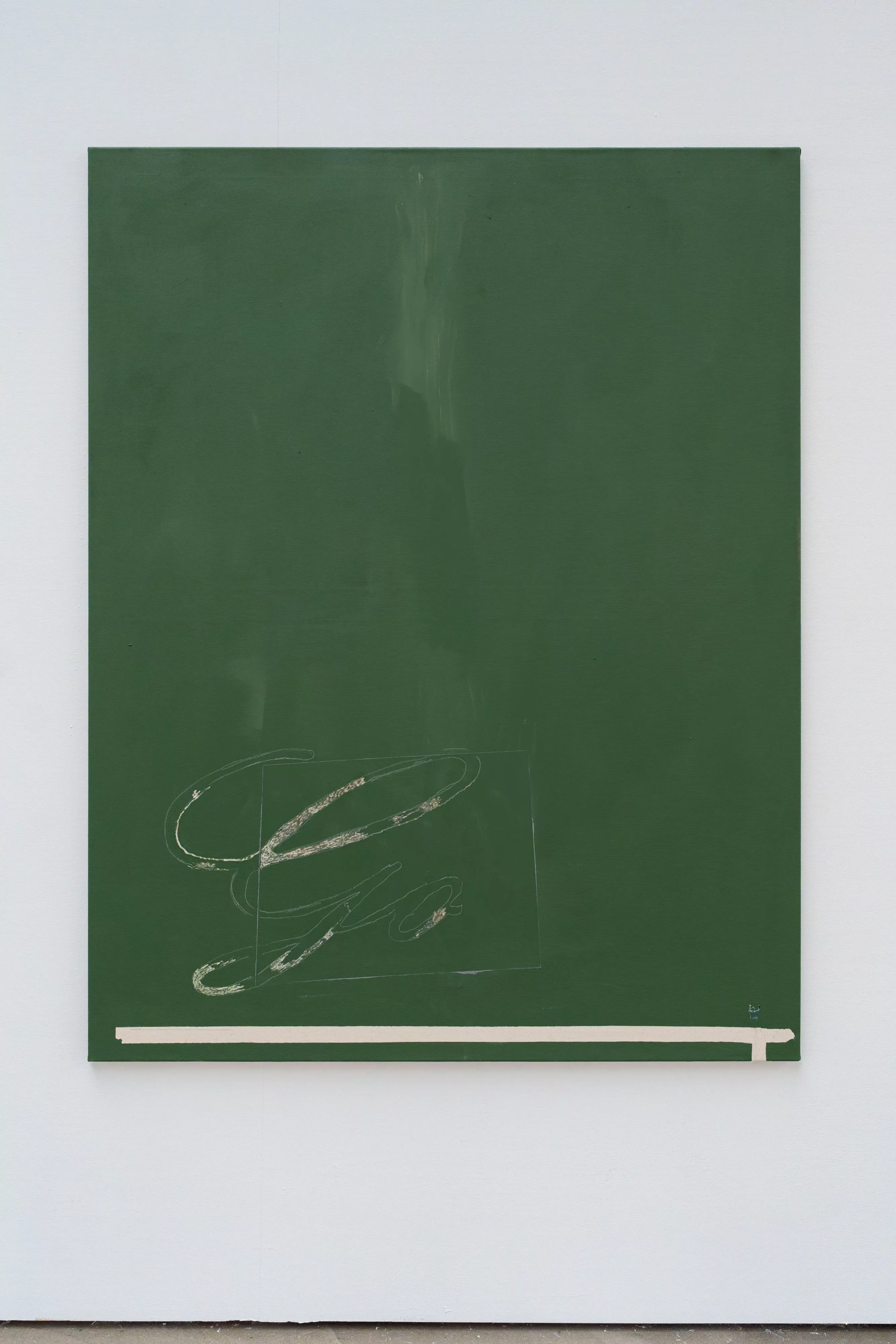
SH: Where do you source the materials and objects you use? Urban spaces, factories, and streets have been sources of inspiration for you. How do these environments influence the themes in your work?
CB: Those environments are key. They come from subcultural signifiers—what people believe, what they project. It’s a decision to project these things, but it’s also a reaction to the world around us. You have to be aware of your surroundings and contexts, like reading the room, but on the streets. It’s about street smarts and how that logic translates into artwork, with different angles and perspectives.
There’s definitely an urban language in my work—a rawness that reflects urban environments. For instance, I might use a long needle made of homemade hair wax, extending from the ceiling. It looks like a giant accessory, but it also has a sharp edge, almost like a self-defense mechanism. The way something is draped or worn can be a defense mechanism. Even the way you look at reflections in a city can be abstracted into artwork, like catching a train by looking at its reflection in a window.
At Kunsthalle Lingen, the space itself—a former steel train repair space—added another layer. Looking out of the Kunsthalle, I could see my works, like the reenactors made of PVC tape figures, reflecting the industrial history of the site. It’s funny how site-specific works can respond to the history of a place, especially when you have a personal connection to that history.
SH: I was thinking about the dualities in your work, like balancing delicacy and brutality, especially with your use of metal and industrial materials. How do you navigate this tension?

CB: I’m very conscious of that tension because it’s easy for the work to become about perpetuating violence. Instead, I try to transform that into something neutral or even positive. Introducing craft materials that are accessible and delicate—like thread, felt, or soldering irons—helps subvert the industrial nature of the work. Instead of using heavy-duty metalworking tools, I might hand-cut the materials.
This approach isn’t about avoiding traditional trades, but about problem-solving and making do with what you have. It creates a strange assemblage that has its own logic. I enjoy how these pieces command space, not in a permanent way, but in a way that’s constantly transforming. The relationship between the industrial and the cosmetic is also important. For me, there’s a connection between the delicacy of hair styling and the intensity of industrial work, which is something I’ve seen in my family’s history of owning salons and barbershops.
My uncle owns a barbershop in Chicago, and my mother is doing the same in Texas now. Working in those spaces, or in industrial warehouses, you become like a machine, where your identity becomes secondary to the hustle. But within that, people find ways to express themselves, even within the constraints of a uniform or workplace dress code. It’s about self-preservation, and that’s something I notice a lot—how people choose to express themselves within those confines. One work that really captures this is Bricoleur (2022) in the Mortal Surface exhibition. It’s in the back of the room, and it has a PVC tape stick figure outline on the wall with a sewing machine pedal on the floor. When the viewer presses the pedal, it lights up a bulb inside the wall piece, illuminating the tension between creation and destruction. This piece took about two years to develop, especially the hand-made elements, and it’s an example of how I combine industrial and handmade techniques to create a narrative about labour, survival, and personal expression.
SH: How do you see your work evolving in the future? Are there any new materials or themes you’re interested in exploring?
CB: I’m always thinking about how to push the boundaries of what I’m currently doing. I’m particularly interested in expanding the role of sound in my work. I’ve been experimenting with sound pieces that complement the visual aspects of my installations. For instance, incorporating recordings of industrial sounds, street noise, or even spoken word elements. These sounds can create an immersive environment that deepens the viewer’s experience and connects more directly with the themes I’m exploring, like labour, identity, and transformation.
In terms of materials, I’m intrigued by the possibilities of biodegradable or ephemeral materials. Something that not only captures the moment but also changes or degrades over time, adding a layer of impermanence to the work. This could be a reflection on the transient nature of life and the constant process of decay and renewal in urban environments.
Words by Sofia Hallström

